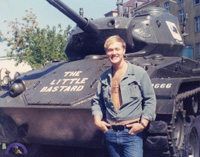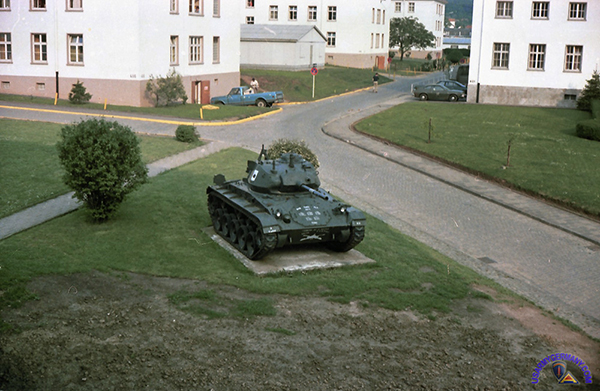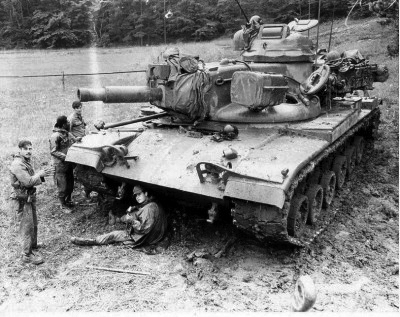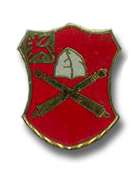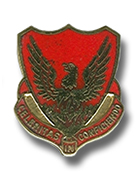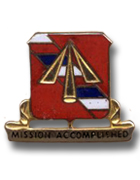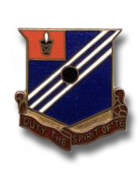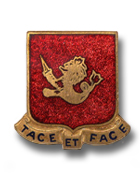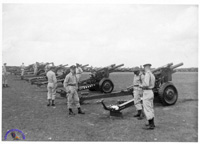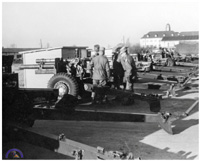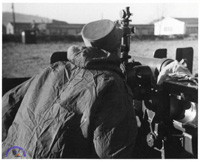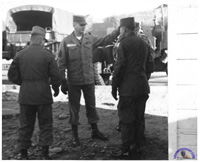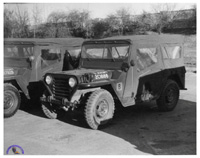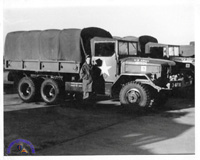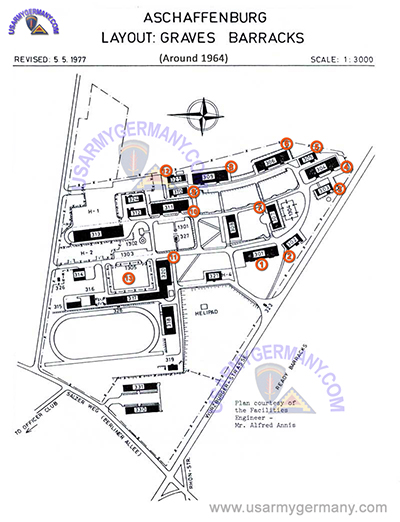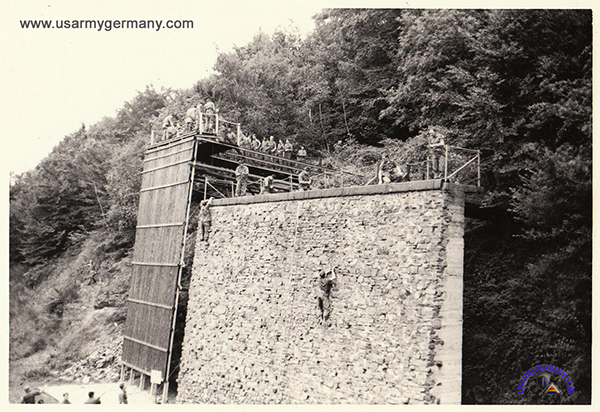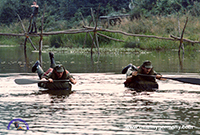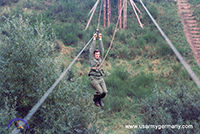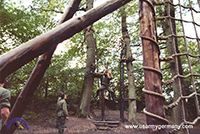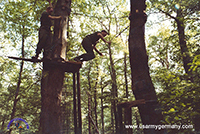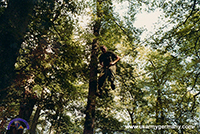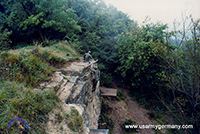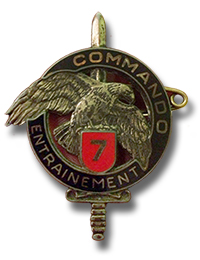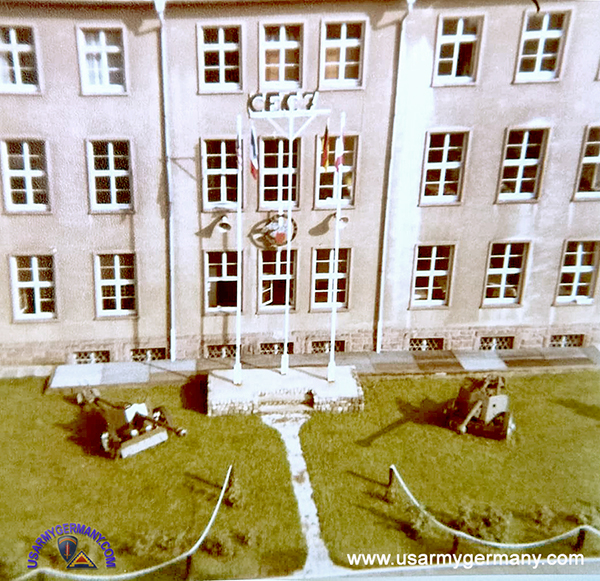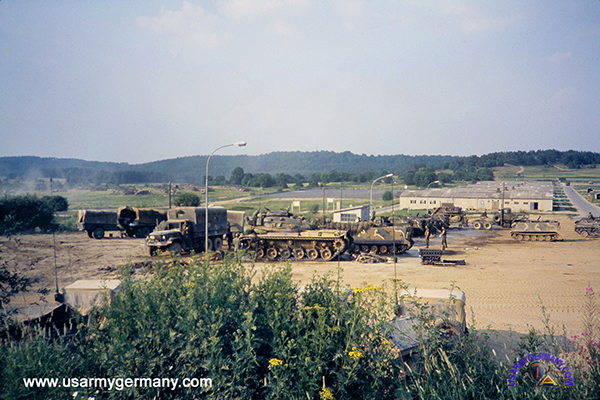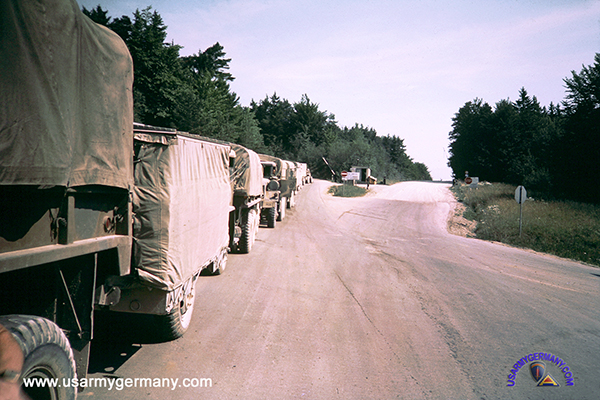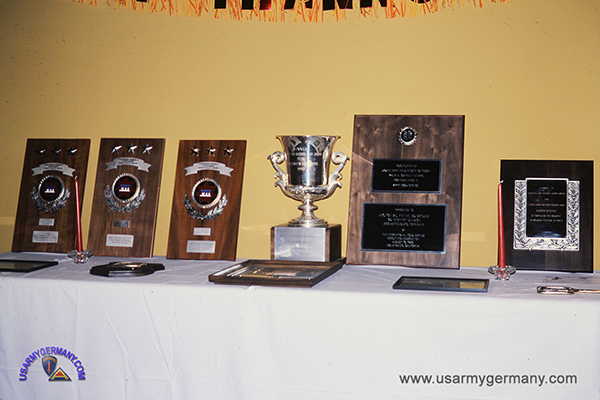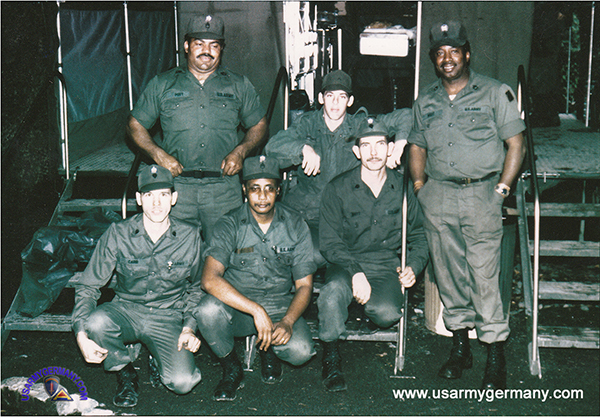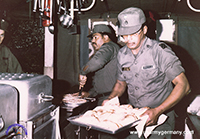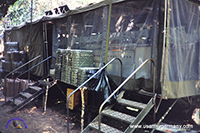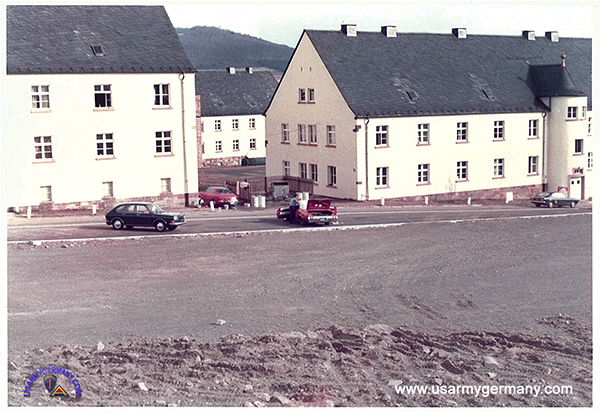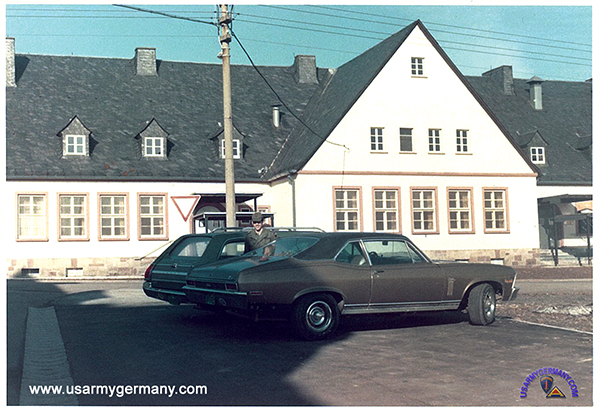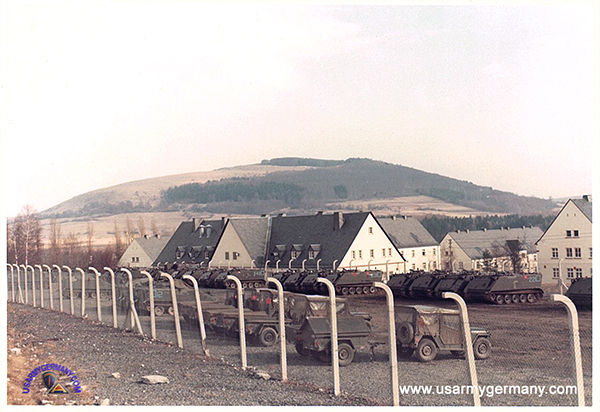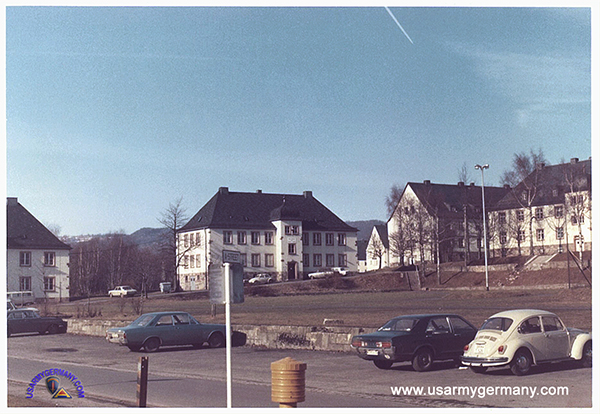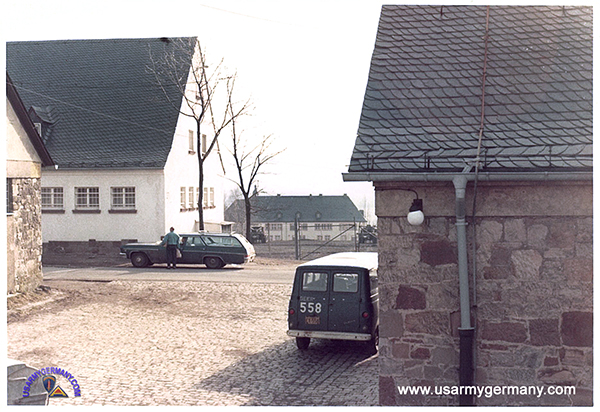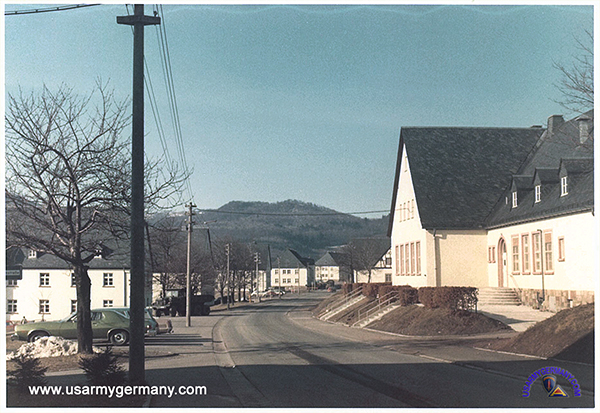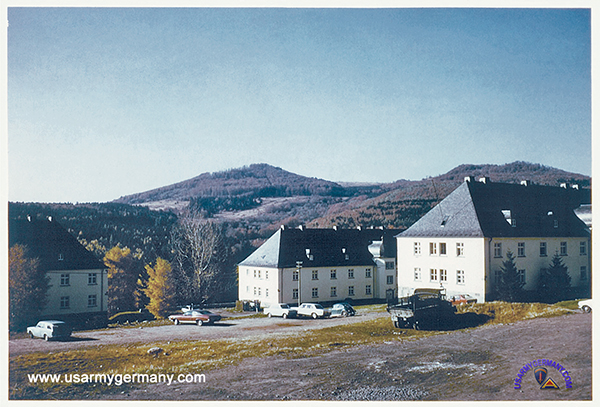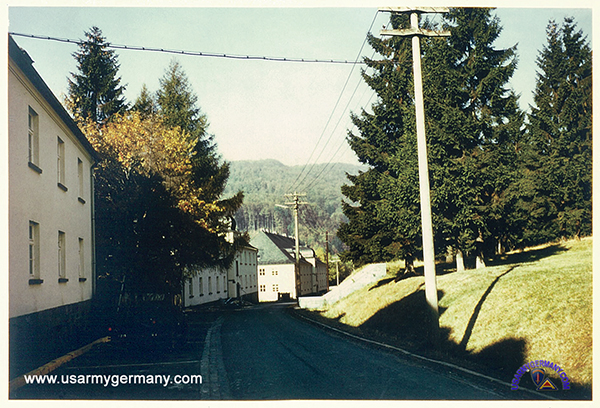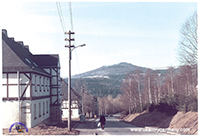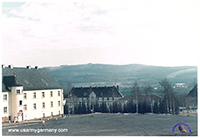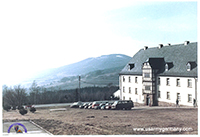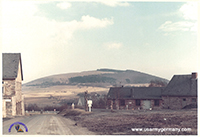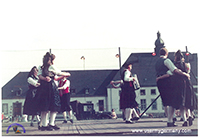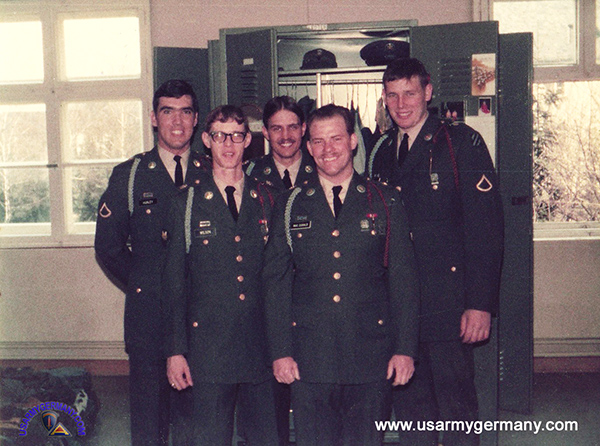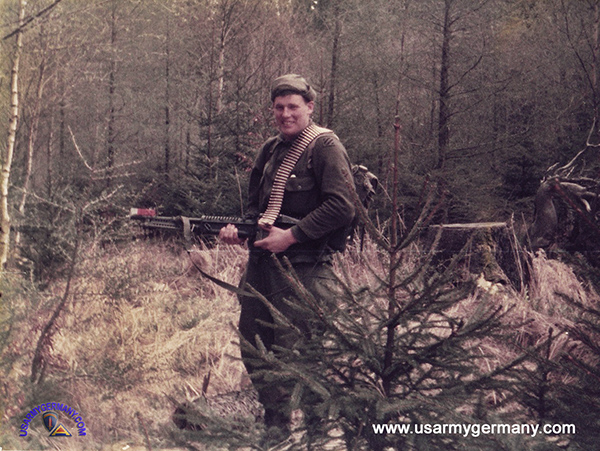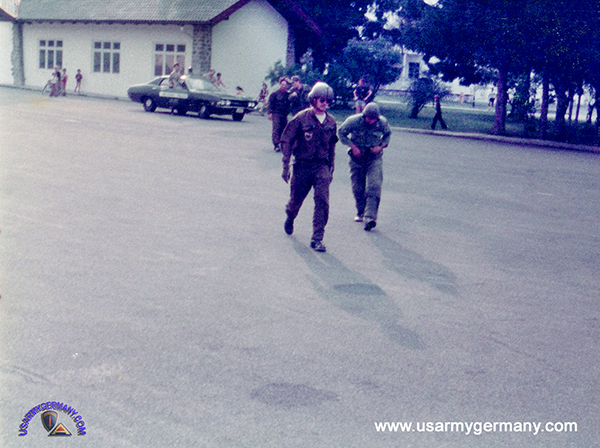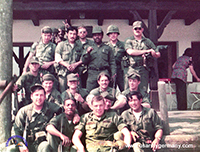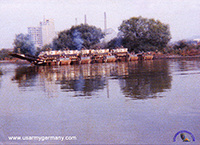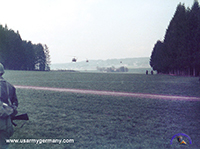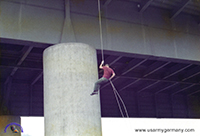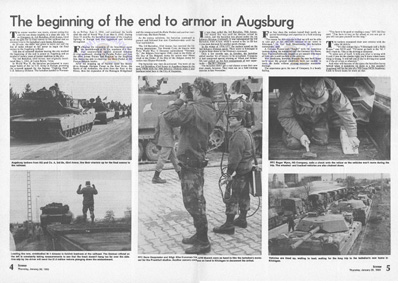| If you do NOT see the Table of Contents frame to the left of this page, then Click here to open 'USArmyGermany' frameset |
|||||||||||||||||||||||||||||||||||
|
3rd Infantry Division (Mech) |
|||||||||||||||||||||||||||||||||||
|
|
|||||||||||||||||||||||||||||||||||
|
|||||||||||||||||||||||||||||||||||
|
|
|||||||||||||||||||||||||||||||||||
| Brigade Units | |||||||||||||||||||||||||||||||||||
|
|||||||||||||||||||||||||||||||||||
| 1st Brigade | |||||||||||||||||||||||||||||||||||
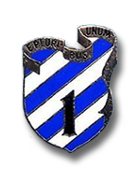 1st Brigade, 3rd Inf Div (M) DUI 1st Brigade, 3rd Inf Div (M) DUI |
|||||||||||||||||||||||||||||||||||
| 1974 | |||||||||||||||||||||||||||||||||||
| (Source: Email from Earl M. George) | |||||||||||||||||||||||||||||||||||
| HQ 1st Bde, 3 ID and HHC 1st BDe moved from Ledward BKs to Conn Bks sometime early 1974, I believe. I was with 2nd Bn, 30th Inf from March 72 till like Oct or Nov 73 when I got the Assistant S-1 1st Bde job. I believed we moved because BG Willard Latham, the Schweinfurt Community Leader and Assistant Div commander wanted us out of the HQ building. We therefore moved to Conn Barracks. I left the Brigade in early March 1975. |
|||||||||||||||||||||||||||||||||||
| Mid-1970s | |||||||||||||||||||||||||||||||||||
| Photos were provided by Markus Bach from Rothenburg o/T, Germany; originals came from Randy Oliff, 1st Bde, mid 1970s. Webmaster note: AFV Interiors - A great website with lots of informstion on US battle tanks including the M60A2 |
|||||||||||||||||||||||||||||||||||
| 1980 | |||||||||||||||||||||||||||||||||||
| (Source: USAREUR Telephone Directory - Troop Units, Spring 1980) | |||||||||||||||||||||||||||||||||||
| ORGANIZATION (Spring 1980): | |||||||||||||||||||||||||||||||||||
|
|||||||||||||||||||||||||||||||||||
| 2nd Brigade | |||||||||||||||||||||||||||||||||||
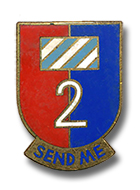 2nd Brigade, 3rd Inf Div (M) DUI 2nd Brigade, 3rd Inf Div (M) DUI |
|||||||||||||||||||||||||||||||||||
| 1967 | |||||||||||||||||||||||||||||||||||
| (Source: Email from David Adams) | |||||||||||||||||||||||||||||||||||
|
|||||||||||||||||||||||||||||||||||
| 1980 | |||||||||||||||||||||||||||||||||||
| (Source: USAREUR Telephone Directory - Troop Units, Spring 1980) | |||||||||||||||||||||||||||||||||||
| ORGANIZATION (Spring 1980): | |||||||||||||||||||||||||||||||||||
|
|||||||||||||||||||||||||||||||||||
| 3rd Brigade | |||||||||||||||||||||||||||||||||||
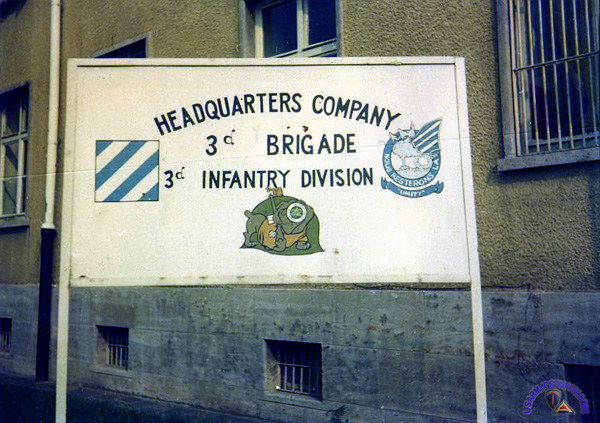 |
|||||||||||||||||||||||||||||||||||
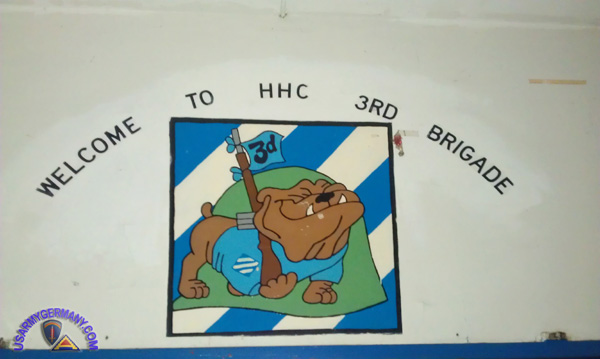 Mural found in Bldg 404, Ready Barracks, May 2012 (Martin Kühnel) |
|||||||||||||||||||||||||||||||||||
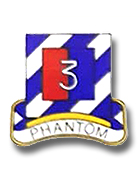 3rd Brigade, 3rd Inf Div (M) DUI 3rd Brigade, 3rd Inf Div (M) DUI |
|||||||||||||||||||||||||||||||||||
| 1973 | |||||||||||||||||||||||||||||||||||
| (Source: Email from Wayne Lutz, HHC, 3rd Bde, 3rd Inf Div (M)) | |||||||||||||||||||||||||||||||||||
|
|||||||||||||||||||||||||||||||||||
You have some great photos on your site of 406, as well as 405, the mess hall which I remember well, and 401 to the right of that, which was the headquarters of the 3rd Brigade, housing the Commander's office, S-2, S-3, S-4 and other administrative offices. I was in the commo platoon, I was a teletype operator. There was a very secure room in that HQ (Building 401) on the second floor. This room was the communications center for the HQ. Our commo was teletype, and it was encrypted by "crypto" equipment. I held a "Top-Secret, Crypto" security clearance for the purposes of working this communications center. A few days ago I found some photos of those buildings, just a coincidental find on the web, taken by a guy who had done a motorcycle trip in Aschaffenburg. He photographed the same buildings, and the year was 2005. The buildings were crumbling and abandoned. He also had a photo of the community chapel across the street from Ready barracks, the very chapel in which my wife (A German Girl) and I were married in 1975. I contacted this guy and he responded, and if you would be interested in those I'm sure he would let you publish them. Again, I very much appreciate your website. I am proud of my three years of service in the 3rd Infantry Division in A-burg. I later did another 3 year tour on Spangdahlem Air Base, on the Mosel River near Bitburg. |
|||||||||||||||||||||||||||||||||||
| 1977 | |||||||||||||||||||||||||||||||||||
| (Source: Email from Daniel Terrell) | |||||||||||||||||||||||||||||||||||
|
|||||||||||||||||||||||||||||||||||
| 1980 | |||||||||||||||||||||||||||||||||||
| (Source: USAREUR Telephone Directory - Troop Units, Spring 1980) | |||||||||||||||||||||||||||||||||||
| ORGANIZATION (Spring 1980): | |||||||||||||||||||||||||||||||||||
|
|||||||||||||||||||||||||||||||||||
| 1983 | |||||||||||||||||||||||||||||||||||
| (Source: ASCHAFFENBURG FORUM, April 27, 1983) | |||||||||||||||||||||||||||||||||||
| Impact of the ARMY MODERNIZATION PROGRAM on 3rd Brigade and the Aschaffenburg Community The United States Army is currently involved in the most extensive peacetime modernization program in its history. A large part of this modernization is taking place in unit reorganization and aquisition of new weapons and equipment. Part of the changes are already taking place in Aschaffenburg. The transition of the 4/64th Armor from the M60 tank to the M1 was probably the most visible change that has taken place, but it is simply the first of many. As part of the transition to the new tank the Tuskers went from three to four line companies and similar changes are now being undertaken by the two infantry battalions. Under the Army's Division 86 organizational pIan the infantry battalions will go from a Headquarters Company, one Combat Support Company and three line companies to a Headquarters Company, one Anti-tank Company and four line companies. Under the new organization we will be able to move faster, communicate better and we will have more firepower," according to 1LT Emory Helton, Force Modernization Specialist for the 3rd Brigade. Two new companies New equipment "The M2 has vastly superior firepower to the M 113 it is replacing, especially long range kill capability. With the TOW system on this vehicle you can knock out a tank at over 3000 meters, that's more range than the Soviet tanks have," according to Helton. To aid in maintenance on the new vehicle the maintenance bays at Fiori are being renovated and a new facility with high speed wash rack is being built at Graves. Most of these changes will have very little impact on family members, except for the short-term housing crush which we will face this summer. Over the long range there will only be a net increase of thirty five families in this area. Eventually the Division 86 plan will encompass all the units in Aschaffenburg, there will be new organizations and equipment for the engineers and the artillery but these changes are still a few years down the line. "We are going thru these changes so we can create more of a deterrent, we will have a stronger base from which to maintain peace without action," added IL T Helton. (Source: ASCHAFFENBURG FORUM, Nov 9, 1983) |
|||||||||||||||||||||||||||||||||||
| 3rd Division Artillery | |||||||||||||||||||||||||||||||||||
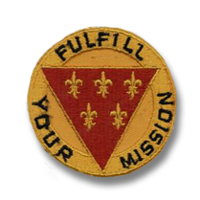 3rd Infantry Division Artillery Pocket Patch 3rd Infantry Division Artillery Pocket Patch |
|||||||||||||||||||||||||||||||||||
| Early 1980s | |||||||||||||||||||||||||||||||||||
|
|||||||||||||||||||||||||||||||||||
| 1960 | |||||||||||||||||||||||||||||||||||
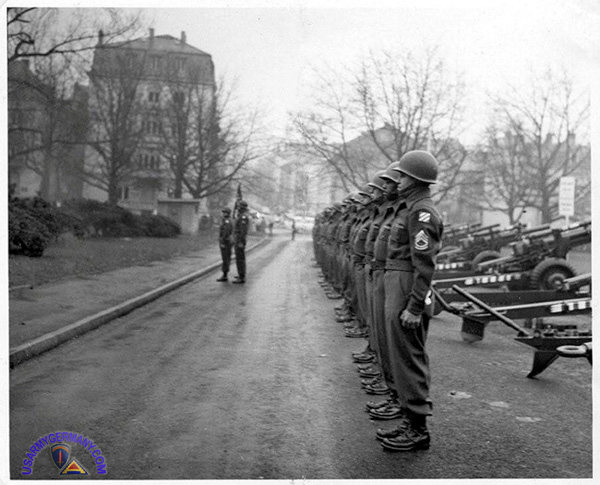 |
|||||||||||||||||||||||||||||||||||
| (Source: Email from Jimmy Smith, 6th Bn, 18th Arty, 1960-62) | |||||||||||||||||||||||||||||||||||
| I served with "A" Battery, 6th Bn of the 18th Arty in Aschaffenburg, Germany from 6/1960 to 12/1962....I have photos of A Btry and some of the guys that served. The 6/18 was disbanded in April of 1963 (Webmaster note: probably as part of the division reorganization under ROAD.) (Click here to see Jimmy's Ready Barracks photos on the Aschaffenburg Page.) |
|||||||||||||||||||||||||||||||||||
|
|||||||||||||||||||||||||||||||||||
| DivArty ROAD Changes (1963) | |||||||||||||||||||||||||||||||||||
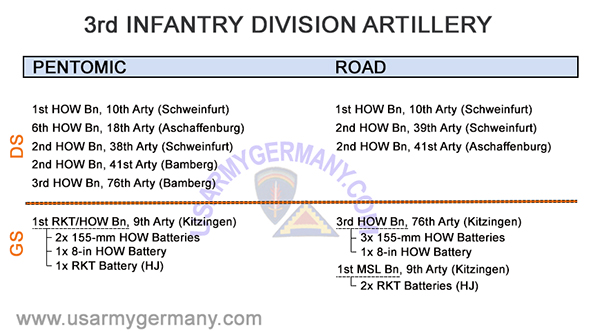 |
|||||||||||||||||||||||||||||||||||
| 1967 | |||||||||||||||||||||||||||||||||||
| (Source: USAREUR STATION LIST, 30 June 1967) | |||||||||||||||||||||||||||||||||||
| ORGANIZATION: | |||||||||||||||||||||||||||||||||||
|
|||||||||||||||||||||||||||||||||||
| (1) 155mm SP | |||||||||||||||||||||||||||||||||||
| (2) 155mm / 8in SP | |||||||||||||||||||||||||||||||||||
| (3) Honest John | |||||||||||||||||||||||||||||||||||
| 1980 | |||||||||||||||||||||||||||||||||||
| (Source: USAREUR Telephone Directory - Troop Units, Spring 1980) | |||||||||||||||||||||||||||||||||||
| ORGANIZATION (Spring 1980): | |||||||||||||||||||||||||||||||||||
|
|||||||||||||||||||||||||||||||||||
| 1st Battle Group, 7th Infantry | |||||||||||||||||||||||||||||||||||
| 1962 | |||||||||||||||||||||||||||||||||||
| (Source: Email from Paul Kelly, 1st Battle Group, 7th Infantry) | |||||||||||||||||||||||||||||||||||
| I was stationed in Germany in the Third Infantry Division, from 1 Mar 1963 to 12 Sep 1965. I was in Company B, 1st Battle Group, 7th Infantry at Graves Kaserne, Aschaffenburg, West Germany, from Mar 1963 until June 1963. When the Army instituted the ROAD Concept, I became a "Charter Member" of HHC Third Brigade, Third Infantry Division (Mech), at Ready Barracks, A-burg. In Feb 1965 I was assigned to Company A, 1st Battalion,7th Infantry, back in Graves Kaserne! I am familiar with Graves Barracks and can point out some of the sites (see annotated installation map above). Some notes concerning the map: The "Track Park" (No. 14) was where the Battalion kept it's Armored Personnel Carriers. |
|||||||||||||||||||||||||||||||||||
| 1st Battalion, 7th Infantry | |||||||||||||||||||||||||||||||||||
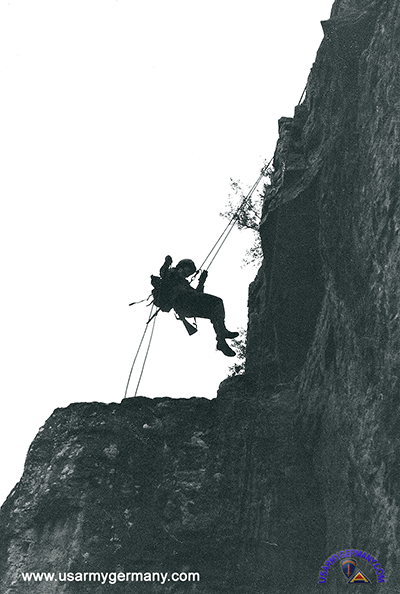 |
|||||||||||||||||||||||||||||||||||
|
|||||||||||||||||||||||||||||||||||
| 1979 | |||||||||||||||||||||||||||||||||||
| (Source: Email from Jim Nordahl) | |||||||||||||||||||||||||||||||||||
|
|||||||||||||||||||||||||||||||||||
 600.jpg) Quartier Castelnau, Trier (French postcard) |
|||||||||||||||||||||||||||||||||||
| In the field at Graf: photos from one of the battalion's several training cycles at the training area. | |||||||||||||||||||||||||||||||||||
| I was very proud of the Philip A. Connelly award winners for Best Field Mess in the Army 1982. | |||||||||||||||||||||||||||||||||||
|
|||||||||||||||||||||||||||||||||||
| 2nd Battalion, 15th Infantry | |||||||||||||||||||||||||||||||||||
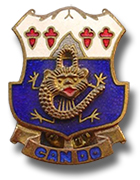 2nd Bn, 15th Infantry DUI 2nd Bn, 15th Infantry DUI |
|||||||||||||||||||||||||||||||||||
| 1973 | |||||||||||||||||||||||||||||||||||
| (Source: Email from Dennis Odlum) | |||||||||||||||||||||||||||||||||||
| I spent some time in southern California in the early 1970's. So when I did enlist in 1972, the recruiter gave me some Basic Training choices, one being Fort Ord, outside of Monterey, California. I said, how great is this! It was November, and northern California is NOT pleasent in November! Misty, rainy, cold, foggy, windy, you name it, it was there! I even got to guard the golf course with a baseball bat!! I think Fort Ord would have been an ideal permanent station, but not for a trainee. After Ord, AIT in Fort Polk was uneventful. I was selected to attend post-AIT in Fort Knox at APC School for 4 weeks. I flew to Frankfurt April 1973, and spent 2-3 days in the replacement depot. One of the first speeches we got was the good German posts, and where you don't WANT TO GO. Wildflecken always led those lists! Newbies were asked not to leave the depot walls, nobody listened. I was assigned to the 3rd Infantry Division in Wurzburg, without the umlaut. Wurzburg was one of the nicer posts. I got other speeches of the various 3rd Inf posts, and where not to go. Again, Wildflecken led that list too. How lucky could I get!! Spent about 2 days in Wurzburg. Again, newbies were asked not to leave the post, nobody listened. |
|||||||||||||||||||||||||||||||||||
| Got to Wildflecken early April. The battalion was actually in Garmish Partenkirchen for winter training, so the battalion buildings were rather empty, so I pulled guard duty. There, I got to guard an ammo dump with an M-16, of course no ammo. In retrospect, Wildflecken wasn't too far from the border, and we were guarding missiles with empty weapons. Wildflecken is midway between Fulda and Wurzburg, in the Rhoen Mountains. The post buildings were all off-white and black roofs, and mostly the same shape and architecture. If anything, the Germans were always consistent! The camp was a German army camp during the war, and became a DP (displaced person) camp after the war. Mostly civilians, POWs, and concentration camp survivors trying to make their way back home after the war, wherever home was, Poland, Russia, Holland, etc. The camp site in a hill above the village. Wildflecken village is a farming community about a klick from post.. I was assigned to B Compan, 2nd Bn, 15th Inf. I was in a line company for about 9 months, but in those 9 months: (1) the Division participated in 1973 REFORGER, against the 82nd Airborne near Nuremberg (whole other story, different email), (2) the squad I was in participated in the Division MISPIC (Mechanized Infantry Squad Proficiency Course) and we won the compitition, quite an honor, and (3), spent about 10 days in Hohenfels in December. Not where you want to be in December. By the time you got your heat tab lit, your canteen froze. The CO said, if you get frostbite, I'll give you an Article 15! Eventually, someone found out I could type, and I became the TAMMS (The Army Maintenance Management System) clerk in the motor pool, kinda like the office manager. Relatively, easy assignment, fun, could be boring. Right next to the post snack bar. I volunteered for a lot of coffee runs! I got married in 1974, moved off post and lived on a farm in Breitenbach, about 12 miles from post. Fresh milk, eggs, slabs of pork when a pig was slain. I helped deliver a calf once. I got involved...on a very small scale...in the black market: cigarettes, whiskey, soap detergent, ice cream, mostly to the landlord. Lot of German beer, lot of skiing actually, too. |
|||||||||||||||||||||||||||||||||||
My neighbor was the director of the AYA (American Youth Activity) on Wildflecken. Kinda like a Boy's and Girl's Club for dependents, ages up thru high school. He offered me the Sports Director position. I was able to get reassigned from the infantry to post headquarters for the duration of my Wildflecken time. Organized teams, games, uniforms, officials, banquets. No army uniform, no formations, no roll call, no maneuvers, no APC's, no mess halls. Lived off post, living the life. Plus, any hours over 40, I was able to submit a time sheet to Post Headquarters, and was paid for. My wife got a paid job also as Recreation Director. What a gig!! You know, for a post that had a terrible reputation, had terrible weather, remote as hell, I really think most soldiers who were there really enjoyed all those aspects of Wildflecken, Top of the Rock, and all that. |
|||||||||||||||||||||||||||||||||||
|
|||||||||||||||||||||||||||||||||||
| 1975 | |||||||||||||||||||||||||||||||||||
| (Source: Email from Jim Nordahl) | |||||||||||||||||||||||||||||||||||
| I have some photos of 2nd Battalion, 15th Infantry at Wildflecken from 1975-76. | |||||||||||||||||||||||||||||||||||
|
|||||||||||||||||||||||||||||||||||
| 3rd Battalion, 63rd Armor | |||||||||||||||||||||||||||||||||||
| 1982 | |||||||||||||||||||||||||||||||||||
| (Source: AUGSBURG SCENE, April 15, 1982) | |||||||||||||||||||||||||||||||||||
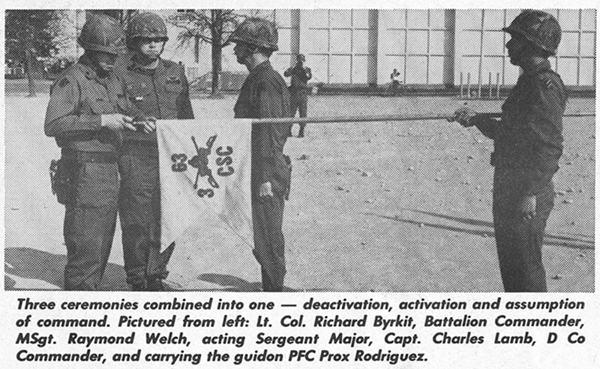 |
|||||||||||||||||||||||||||||||||||
| Armor battalion revamps concept The activation of D Company - 3rd Battalion, 63rd Armor's fourth tank company and deactivation of Combat Support Company was the occasion for the ceremony held April 1. The reason for this organizational change is that armor battalions, Army-wide, currently redesignate under Division 86's organization concept. Division 86 will be organized under a new table of organization and equipment. According to Maj. Hondo Campbell, Battalion Operations Officer, this reorganization will make the battalion, as a whole, more combat effective. Capt. Charles Lamb, former Combat Support Company Commander and now D Company Commander, said that the nature of the company changed tremendously. Approximately 60 people, who hold MOS 19E (tanker), and 14 tanks make up the fighting force in the 3/63rd Armor. All maintenance sections, scouts mortars, air defense weapons, and armored vehicles that used to be assigned to Combat Support Company were transferred to Headquarters Company. This increased Headquarters Company's strength to 340 men. A main attraction at the reorganization ceremony was a M-1 "Abrams" tank that was brought for the day from the M-1 Materiel Fielding Team, located in Vilseck. 3rd Battalion, 63rd Armor is slated to receive a total of 58 M-1s. "This battalion is configured so that each one of our four tank companies will have 14 new tanks, and our headquarters tank section will have two M-1s. As it relates to this battalion, the M60 will be slowly phased out," Campbell explained. "It's a very sophisticated weapons system. There is no question in my mind -- the M-1 is the most capable system known to either the free world or other Warsaw Pact nations," he said. The M-1 is a four-men, highly mobile and fully tracked 60-ton fighting vehicle. Improved survivability in this tank is provided by a perfected ballistic protection and the compartmentalization of service ammunition and fuel, which means that if a shell would penetrate the M-1's magazine, the exploding shells blow skyward rather than into the tank chamber where the soldiers are seated. The M-1 also has a fully integrated day and night shoot-on-the-move fire control system, a 105mm main gun and coaxially mounted M-240 machine guns. A 1,500-horsepower turbine engine permits the M-1 a speed of 45 mph on secondary roads and 35 mph on cross country, with an acceleration from zero to 20 mph in 6.4 seconds. According to 1 Lt. Richard Ricklefs, Intelligence Officer, the units will deploy to the Grafenwoehr and Hohenfels training areas for the initial M-1 training. A 65-day training cycle for qualifications and tactical training will prepare tank and maintenance crews for the new weapon. |
|||||||||||||||||||||||||||||||||||
| (Source: AUGSBURG SCENE, January 20, 1983) | |||||||||||||||||||||||||||||||||||
| Article provides some historical details about the 3rd Bn, 63rd Armor's stationing in Augsburg since the 1960s and its move to Harvey Barracks, Kitzingen in early 1983. | |||||||||||||||||||||||||||||||||||
| 3rd Battalion, 64th Armor | |||||||||||||||||||||||||||||||||||
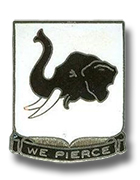 3rd Battalion, 64th Armor DUI 3rd Battalion, 64th Armor DUI |
|||||||||||||||||||||||||||||||||||
| 1971 | |||||||||||||||||||||||||||||||||||
| (Source: Email from Thomas M. Harris) | |||||||||||||||||||||||||||||||||||
| I reported to the 3rd Bn, 64th Armor at Conn Barracks as a young Second Lieutenant in May, 1971. Within a couple of weeks, our new Battalion Commander arrived - LTC Jim Hetherly, a short, feisty, cigarette-puffing Cavalryman. As Battalion Support Platoon Leader, I worked rather closely with Hetherly the first year of my tenure there. I joined B Company in 1972 as a Tank Platoon Leader/Company Executive Officer. Hetherly and his staff developed a comprehensive Tank Gunnery training plan, which eventually led to the Battalion qualifying 100% of our M-60/M-60A1 tanks in Tank Crew Qualification Course (TCQC) at Grafenwohr in March, 1973. My platoon was the High Platoon in the Battalion, and would have been the highest in the Division, except that since Hetherly and his tank crew used one of my tanks, we were not considered a "full platoon". At that time, no battalion had ever qualified 100% of their crews, so it was quite an experience for all of us. LT Mike Lawler of our A Company had the highest TCQC score in USAREUR, and a number of us qualified "Distinguished". |
|||||||||||||||||||||||||||||||||||
| 1977 | |||||||||||||||||||||||||||||||||||
| (Source: Email from David R. Moya) | |||||||||||||||||||||||||||||||||||
| No Slack Alpha: I was stationed in Schweinfurt, Germany (Conn Barracks) from 1977 to 1980. I was in First Platoon under SSgt McClure and my Tank Commander was SSgt Wright. Looking back these were some of the best times and some of the best and most honorable men I have ever met in my life I knew I could count on all of the men in my unit and would gladly have gone to war with them. A s I was getting ready to be discharged the only thing I had on my mind was getting out of the Army not because I hated what I was doing but because only a “Lifer” stayed in, looking back at it I should of stayed in and become a “Lifer” because you do not meet to many honorable people outside of the military. I make a lot of money compared to military standards but you work with people who are not honorable and do not take pride in themselves and what they do. In the military you take pride in yourself, unit and work as a team which still reflects in my work, and in my standards. I hope I can make contact with some of these men that I had the Honor to serve with. |
|||||||||||||||||||||||||||||||||||
| 4th Battalion, 64th Armor | |||||||||||||||||||||||||||||||||||
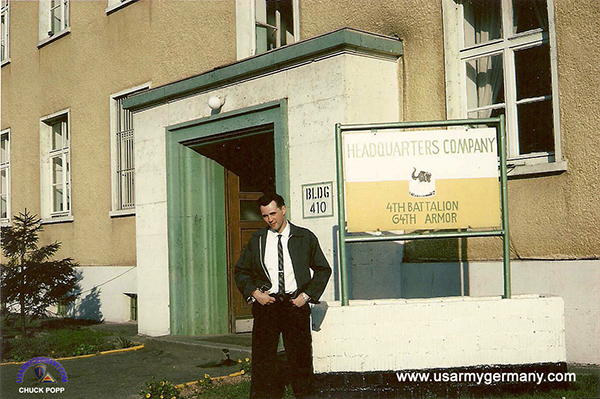 Hq Co, 4th Bn, 64th Armor, Ready Bks, Aschaffenburg, late 1960s (Chuck Popp via Warfoto.com) |
|||||||||||||||||||||||||||||||||||
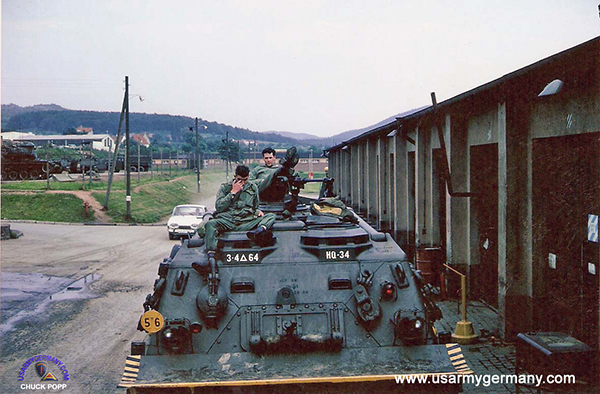 M-88 retriever, Hq Co, 4th Bn, 64th Armor, late 1960s (Chuck Popp via Warfoto.com) |
|||||||||||||||||||||||||||||||||||
 4th Battalion, 64th Armor DUI 4th Battalion, 64th Armor DUI |
|||||||||||||||||||||||||||||||||||
| 1st Medium Tank Battalion, 68th Armor | |||||||||||||||||||||||||||||||||||
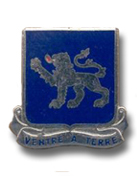 1st Med Tank Bn, 68th Armor DUI 1st Med Tank Bn, 68th Armor DUI |
|||||||||||||||||||||||||||||||||||
| Related Links: |
|||||||||||||||||||||||||||||||||||
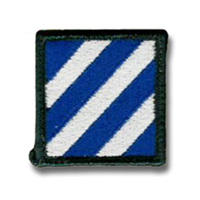
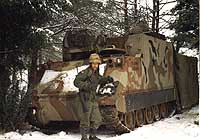
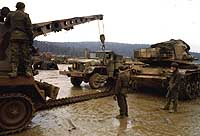
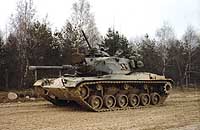
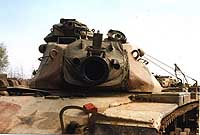
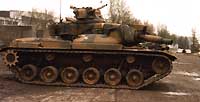
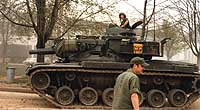
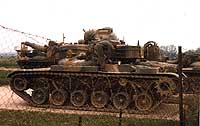
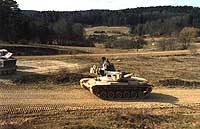
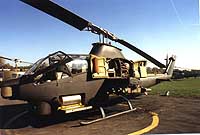
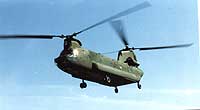
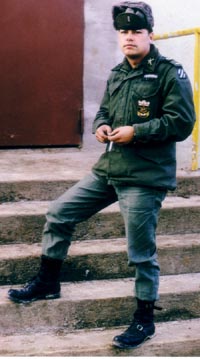
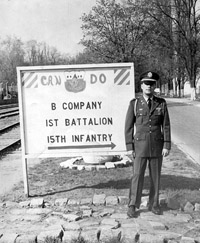 Adams outside of the
Adams outside of the 